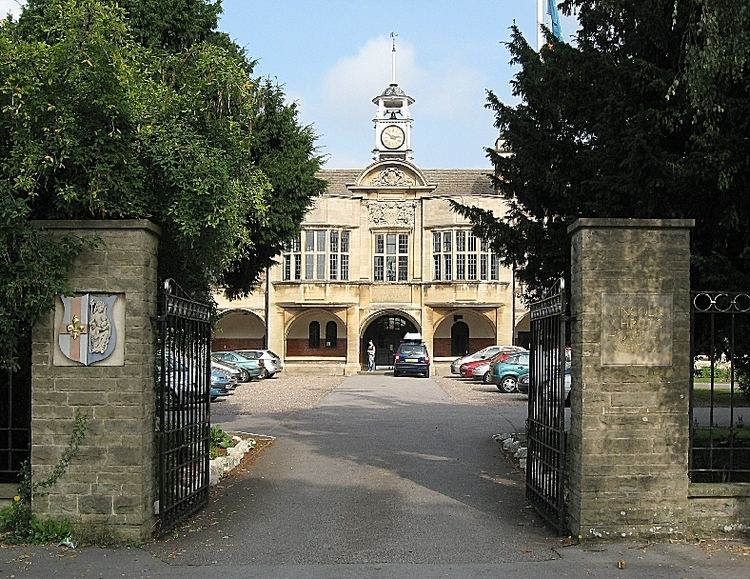Established 1974 Religion Christian DfE number 925/5408 Number of students 1,380 Gender Mixed-sex education | Type Academy Headteacher Martin Mckeown Phone +44 1522 881144 Founded 1974 | |
 | ||
Location Wragby RoadLincolnLincolnshireLN2 4PNEngland Similar Lincoln Minster School, The Priory Academy LSST, William Farr C Of E Comprhe, Lincoln Castle Academy, Branston Community Academy | ||
Lincoln Christ's Hospital School is a state secondary school with academy status located on Wragby Road in Lincoln, Lincolnshire, England.
Contents
- History
- Grammar schools
- Comprehensive
- Academy
- Headmasters of Lincoln School
- Heads of Lincoln Christs Hospital School
- Curriculum
- Academic performance
- Admissions
- Notable former pupils
- Lincoln Grammar School
- Christs Hospital Girls High School
- References
The school was established in 1974, taking over the pupils and many of the staff of the ancient Lincoln Grammar School, Christ's Hospital Girls' High School (established in 1893), and two 20th-century secondary modern schools, St Giles's and Myle Cross.
History
Hospital schools date from the 13th century as boys' schools for parents who could not afford to pay school fees. They were also known as charity schools. The former Lincoln School may have dated from the 11th century, but it was re-founded as a charity school in the 17th century.
The endowment for Christ's Hospital Girls' School was derived from the former Bluecoat School on Christ's Hospital Terrace, Lincoln which was closed in 1883. This school was originally established in 1614 in St. Mary's Guildhall, Lincoln before it was moved to Christ Hospital Terrace in 1623. in September 1893 Lincoln Christ's Hospital Girls' High School was started with Agnes Body as its headmistress.
The Garton Archive, established by Professor Garton, an Old Lincolnian, houses documents, records, photographs, and books detailing the history of the earlier schools.
Grammar schools
LCHS was formed from the merger of two single-sex grammar schools, both of which had some boarders (pupils who lived at the school during term-time). From 1906 the boys' school, Lincoln School (probably dating back to 1090), also known as Lincoln Grammar School, occupied a site on Wragby Road. The girls' school, Christ's Hospital Girls' High School, was founded in 1893 and was based at Greestone Place on Lindum Hill. Before 1944, children whose education was not funded by the foundation had to pay school fees.
Lincoln School had many of the traditions of a public school. In 1914, after the beginning of the First World War, the school's buildings were commandeered for use as a hospital. Lincoln Cathedral choristers were educated at the school until 1944, when the school became a school maintained by public funds. In 1961 a new independent preparatory school for choristers, the Cathedral School for Boys, was established in the cathedral's former Deanery, and was renamed as Lincoln Minster School in 1996; it has since replaced the role that Lincoln School held before 1944.
On 22 July 1941 an RAF Handley Page Hampden crashed into the boarding house of the Girls' High School on Greestone Stairs, killing Miss Edith Catherine Fowle, a languages teacher, as well as the occupants of the aircraft. She had taught at the school for 21 years. By the 1960s the girls' school, a voluntary aided school, had around 550 girls, including 30 boarders.
Comprehensive
In September 1974 the City of Lincoln was the only part of the county in which Lincolnshire County Council decided to abolish selective education. As a result, the city's two grammar schools merged with two secondary modern schools founded in 1933, St Giles's Secondary Modern School for Boys on Swift Gardens and Myle Cross Secondary Modern School for Girls on Addison Drive, to become a new comprehensive school. The buildings of St Giles's are now a temporary primary school, and those of Myle Cross are the Chad Varah primary school.
After the merger of 1974, school uniform policy was relaxed. However, in 2007 school blazers and ties were reintroduced.
The present-day school has had Language College status since 2001, and offers lessons in French, Spanish, German, Mandarin Chinese, Russian and most recently Latin.
Academy
Lincoln Christ's Hospital School became an academy in September 2011. It is now independent of local authority control, and funded directly from central government. However, the school continues to coordinate its admissions with Lincolnshire County Council.
Headmasters of Lincoln School
Heads of Lincoln Christ's Hospital School
Curriculum
Academic subjects studied include: English, Maths, Double and Triple Award Sciences, BTEC Science, Forensic and Medical Sciences*, Media, Modern Languages, Latin, History, Geography, RE, Psychology*, Sociology*, Philosophy and Ethics*, and Citizenship.
Vocational subjects studied include Fine Art, Art Textiles, BTEC Art, Music, Design & Technology, Drama, Drama & Theatre Studies*, Law*, ICT & Business Studies, Resistant Materials, Child Care, Electronics, Product Design*, Production Arts BTEC*, Performance Arts BTE*, Graphic Design, Photography, and Engineering*.
(*) 6th form only subject.
Academic performance
When a grammar school, LCHS would have been the best performing school in Lincoln. As a comprehensive, its results place it in the top five most improved language colleges nationally. It gets GCSE results slightly above average, but A level results below average.
Admissions
Pupil population is just under 1400, including over 300 in the sixth form. Of the school roll, 15 per cent receive free school meals.
